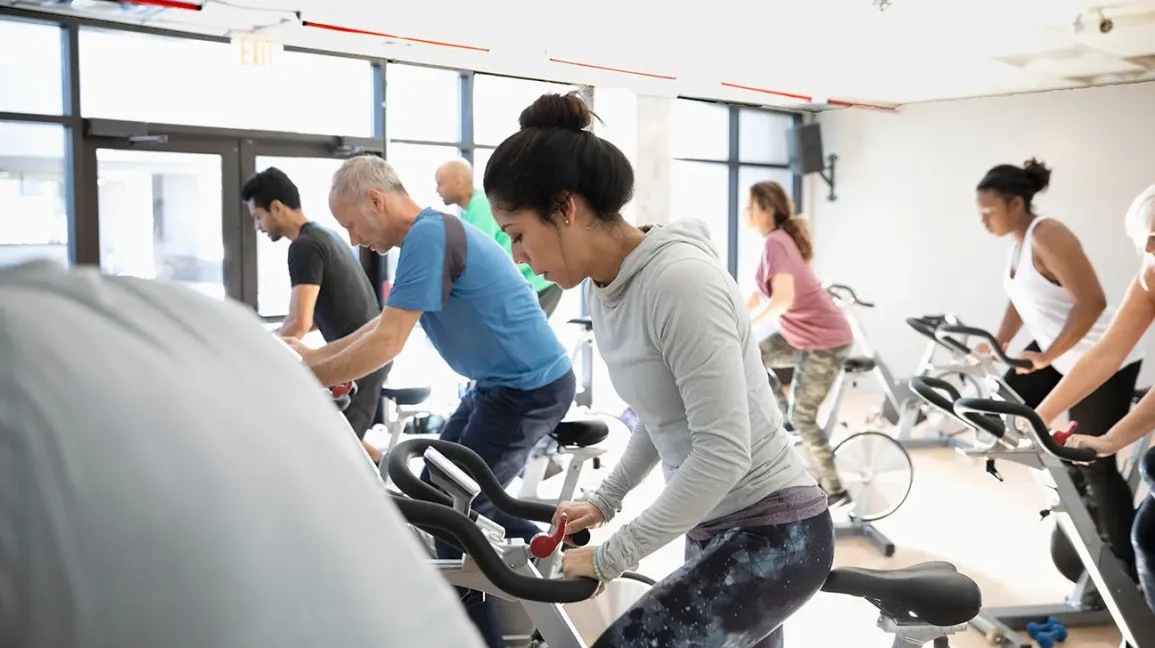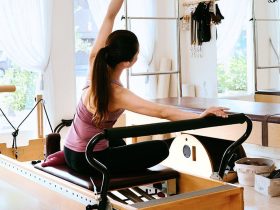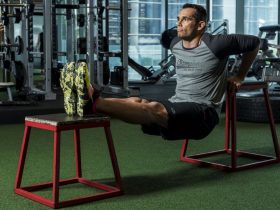When it comes to sustainable fitness, indoor cycling is one of the most effective and scientifically supported workouts for improving cardiovascular health. Unlike outdoor riding, it provides a consistent environment where resistance, cadence, and heart rate can be precisely controlled. The outcome is a dynamic balance between endurance training and high-intensity intervals that supports long-term heart health and overall longevity.
At True Fitness Singapore, the approach to cycling is more than just about breaking a sweat. The sessions are designed with performance data, physiological science, and structured rhythm riding to help members build cardiovascular resilience that extends well beyond the studio.
How Indoor Cycling Strengthens the Heart
Cycling is inherently aerobic, which means it relies heavily on oxygen to produce energy. Each pedal stroke challenges the heart to pump oxygen-rich blood more efficiently throughout the body. Over time, this improves cardiac output, strengthens the left ventricle, and enhances overall vascular function.
When performed at moderate to high intensity for 45 to 60 minutes, indoor cycling can:
-
Improve the heart’s stroke volume (amount of blood pumped per beat)
-
Lower resting heart rate, reflecting increased cardiac efficiency
-
Reduce blood pressure through improved arterial flexibility
-
Boost capillary density, allowing better oxygen transport to working muscles
Research published in the European Journal of Preventive Cardiology indicates that individuals who engage in cycling at least three times a week have a 15 to 20 per cent lower risk of cardiovascular disease compared to those who remain sedentary.
The Role of VO₂ Max and Endurance Adaptation
VO₂ max represents the maximum amount of oxygen the body can utilise during intense exercise. It’s a key indicator of cardiovascular fitness and longevity. Indoor cycling, through its structured intervals and rhythm-based challenges, pushes the cardiovascular system to operate near its VO₂ max zone, improving aerobic capacity over time.
Trainers at top facilities encourage participants to monitor their exertion using perceived effort scales or wearable technology. By alternating between high-intensity efforts and recovery periods, riders progressively train their bodies to deliver and utilise oxygen more efficiently. This adaptation not only boosts endurance but also contributes to better performance in other physical activities and day-to-day energy levels.
Mitochondrial Health and Longevity
Cardiovascular longevity goes beyond the heart. It’s also tied to the cellular level of energy production. Mitochondria, the powerhouses of our cells, play a key role in maintaining overall vitality. Consistent indoor cycling stimulates mitochondrial biogenesis, meaning your body produces more of these energy factories.
This results in improved metabolism, enhanced fat oxidation, and slower ageing at a cellular level. The American College of Sports Medicine notes that high-intensity interval cycling can increase mitochondrial density by up to 30 per cent in just six weeks. That means every cell in your body becomes more efficient at energy conversion, supporting long-term wellness.
Vascular Elasticity and Circulation
A flexible vascular system is essential for longevity. As people age, arteries often become stiffer, leading to increased risk of hypertension and other cardiovascular issues. Regular indoor cycling encourages nitric oxide production in the endothelium (the inner lining of blood vessels), promoting better dilation and elasticity.
Improved circulation also aids in nutrient transport, waste removal, and muscle recovery. For individuals with sedentary jobs or long working hours, this boost in vascular function plays a critical role in reducing risks associated with a modern lifestyle.
Stress, Heart Health, and Emotional Balance
Cardiovascular health isn’t purely physical. Emotional well-being plays a massive part in longevity. Indoor cycling has been found to reduce cortisol levels and stimulate the release of endorphins, serotonin, and dopamine. These neurochemicals contribute to mood stability, reduced anxiety, and improved sleep quality.
Unlike solo workouts, cycling in a group setting introduces a motivational and social component. Synchronising pedalling with music and community energy elevates the emotional experience, creating a meditative flow state. This blend of physical and mental engagement supports the heart’s health both literally and metaphorically.
The Role of Recovery in Cardiovascular Progress
Recovery is as vital as the workout itself. Overtraining without adequate rest can elevate cortisol, increase inflammation, and counteract cardiovascular benefits. A balanced training plan includes lower-intensity rides, stretching, and active recovery days.
Cyclists are encouraged to integrate:
-
Proper hydration to maintain blood volume and reduce strain on the heart
-
Balanced nutrition rich in omega-3s, magnesium, and antioxidants
-
Quality sleep cycles to optimise tissue repair and hormonal regulation
Ageing Gracefully with Indoor Cycling
Many assume that cardio capacity declines sharply with age. However, consistent cycling helps slow down this process. Research shows that active adults in their 50s and 60s who cycle regularly can maintain cardiovascular function comparable to much younger individuals.
Indoor cycling is joint-friendly and adaptable, making it ideal for all age groups. Whether you’re a beginner easing into fitness or an experienced athlete looking to preserve endurance, the low-impact nature of cycling ensures you can continue training safely for decades.
Technology and Data Tracking for Longevity
Modern indoor cycling integrates smart technology that helps participants train smarter, not harder. Using heart-rate monitors, cadence sensors, and power meters, individuals can optimise performance and recovery.
Data-driven metrics allow for:
-
Monitoring progress over time
-
Preventing overexertion by staying within safe heart-rate zones
-
Identifying optimal resistance levels for cardiovascular improvement
These insights turn every class into a personalised cardiovascular lab, where you can measure improvements and make informed adjustments.
Integrating Indoor Cycling into a Holistic Lifestyle
True longevity doesn’t come from exercise alone. It’s the result of lifestyle synergy. Pairing indoor cycling with balanced nutrition, mindfulness, and proper rest creates a holistic foundation for cardiovascular resilience.
Consider incorporating:
-
Short, high-intensity sessions twice a week for aerobic boost
-
Long, steady rides for endurance development
-
Mindful cooldowns to reduce post-session heart strain
Pairing cycling with mindful breathing or yoga can also enhance oxygen efficiency and mental recovery.
The Singapore Advantage
In a bustling city like Singapore, where stress levels can run high and workdays are long, having a convenient, climate-controlled environment for cardio training is invaluable. True Fitness Singapore provides that balance, ensuring members can achieve consistent performance despite external conditions like humidity or rain.
Indoor cycling aligns perfectly with Singapore’s fast-paced lifestyle. It’s efficient, measurable, and community-driven, giving busy professionals the opportunity to stay heart-healthy without sacrificing productivity or time.
Frequently Asked Questions (FAQ)
Q1: How often should I do indoor cycling to improve my cardiovascular health?
A balanced approach is three to four sessions per week, alternating intensity levels. This frequency allows your heart and muscles to adapt without overtraining.
Q2: Can indoor cycling help reduce cholesterol levels?
Yes. Regular cycling increases HDL (good cholesterol) and lowers LDL (bad cholesterol), supporting long-term cardiovascular balance.
Q3: What is the best duration for a single session?
For optimal heart benefits, 45 to 60 minutes per session is ideal. This range provides enough time to reach and sustain target heart zones.
Q4: How does indoor cycling compare with running for heart health?
Indoor cycling offers similar cardiovascular benefits with less joint impact, making it a safer long-term option for people prone to knee or hip discomfort.
Q5: Does indoor cycling benefit older adults?
Absolutely. The low-impact nature and adjustable intensity make it perfect for maintaining heart strength, coordination, and endurance among seniors.
Q6: How can I ensure I’m training in the right heart-rate zone?
Use a heart-rate monitor and aim for 70–85 per cent of your maximum heart rate during peak intervals. Trainers at True Fitness Singapore can guide you in setting personalised targets.









